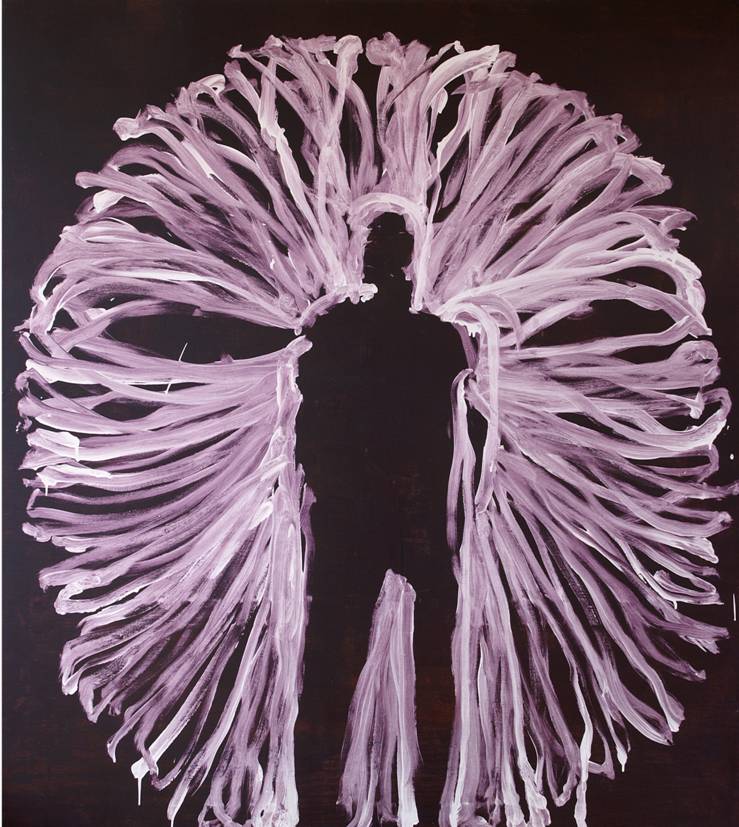Lee Kun-Yong and the Birth of the Korean Avant-Garde
By Kyung-hwan Yeo and Maya El KhalilA man stands in the middle of a field and draws a circle on the ground. Facing the interior of the circle, he points and says, “there.” He then steps inside the circle, points again, and declares, “here.” After exiting the circle, he points back to it and calls it “over there.” Walking around the edge while stepping on the line, he finally names it “where.” This performance was first presented in 1975 at the 4th exhibition of the Korean Avant-Garde Association (AG), a collective of artists and theorists founded in 1969. What was Lee Kun-Yong (b.1942) indicating through his performance?
Lee Kun-Yong, a leading figure of Korean experimental art in the 1960s and 1970s – alongside Kim Kulim, Jung Kangja, Sung Neungkyung, Lee Kang So, Park Hyunki, and Choi Byungso – explored how a place formed by the circle could take on different meanings depending on whether the body was positioned inside or outside of it. Deeply influenced by the phenomenology of Maurice Merleau-Ponty and the linguistic philosophy of Ludwig Wittgenstein, Lee’s performance visualized the logic of events occurring within art through the language of art itself – that is, the process in which the body encounters the world through perception, meets the space in which it stands, and generates logic.

Lee Kun-Yong was both an artist and a practitioner. In 1969, he played a leading role in founding the Space and Time (ST) group, establishing platforms where artists, writers, poets, performers, and members of the general public – including housewives, students, and small business owners – could engage in open discussions and exchange ideas about art and life. In addition to his involvement with ST and the AG, he also led or participated in other art collectives, such as Art News. Through these activities, Lee pursued the phenomenological essence of art, focusing on phenomena and events rather than on technique or emotional expression.
He introduced the term event-logic to describe his performances, in which the body itself served as a medium of manifestation. Distinguishing his practice from happenings, which emphasized improvisation, Lee highlighted the logical structure underlying his actions, rejecting the notion of pure aesthetic consciousness often advocated by art-for-art’s-sake ideologies. Instead, he engaged in repetitive actions that explored logic and events themselves as purposeless processes.
Lee continued to experiment with his art relentlessly in everyday environments -outside the academism centered on the National Art Exhibition and beyond the pure formal explorations of Dansaekhwa painting, which dominated Korea’s art scene at the time.
Layered Medium: We Are in Open Circuits, opening on May 16, 2025, at Manarat Al Saadiyat in Abu Dhabi, is an exhibition that presents over 50 representative works and archival materials from the Seoul Museum of Art’s collection, tracing the trajectory of Korean contemporary art from the 1960s to the present. Beginning with the emergence of experimental art in Korea during the 1960s, the exhibition explores the profound influence of Nam June Paik on the Korean art scene in the decades following the 1980s and considers how Korean contemporary art has engaged with issues of contemporaneity and plurality since the 1990s. Through these works, the exhibition highlights the ways in which Korean contemporary art has absorbed the tensions and contradictions arising from Korea’s rapid socio-political and technological transformations, ultimately cultivating a wide spectrum of media practices within the context of contemporary art. Lee Kun-Yong’s practice encapsulates the exploration and philosophical engagement with media complexity within Korean contemporary art today.

Initiated in 1976, The Method of Drawing is a foundational series through which Lee Kun-Yong has explored the intersections of performance, drawing, and painting for nearly five decades. In this work, Lee begins by radically dismantling the traditional act of drawing or painting on a canvas placed in front of the artist. For him, line-making – the most fundamental method of intervening within two-dimensional space – becomes an exploration of how a simple line interacts with the body.
Lee stands behind a solid plywood panel roughly equal to his height (170 cm) and stretches out his arms to create a series of lines. The Method of Drawing is both a drawing and a performance that captures bodily movement and physical limitations as he extends and bends his arms, waist, and legs to reach the surface of the panel, later cutting away the sections after drawing.
This work challenges traditional notions of painting by drawing lines from behind the surface instead of facing the canvas directly. By prioritizing the physical experience of the body over visual composition, it paradoxically reveals the logical structure of drawing through limited physical actions. The Method of Drawing is the result of Lee’s experiments into how the body perceives and performs within the pictorial plane. It later developed into the Bodyscape series and has continued to evolve in various forms from 1976 to the present. His practice continues to explore the process by which the body perceives the pictorial plane and the self encounters the world as an event.
In Body Drawing, Lee Kun-Yong records the traces left behind by the flow and movement of the body. Standing with his back to the canvas, he extends his arms to their full reach and connects the starting and ending points, creating lines formed by the movement of his hands. Leaving only traces of the body, the work directly reveals the marks produced by the speed of the arms’ movement and the passage of time within the artwork. Rather than drawing under conscious direction, the body perceives the pictorial plane through the lines generated by the movement of the arm.

Through a collaborative curating process, Layered Medium: We Are in Open Circuits goes beyond offering a chronological overview of Korean art. It focuses on the avant-garde spirit embraced by Korean experimental artists in the 1960s, tracing how this movement expanded through various practices that drew the Korean art scene out of its regional context and connected it to the global art world – particularly through the pivotal role of the internationally renowned artist Nam June Paik.
The exhibition further examines how, since the 2000s, Korean contemporary artists have individually expanded the concept of medium into the realms of the body, society, and spatial media, within their own thematic discourses, forming a constellation of diverse practices. These artists engage with the discontinuities, ruptures, forgotten voices, gaps, and latent possibilities that emerge within the vast circulations of cultural transformation and the forces of capital.
Co-organized by the Seoul Museum of Art and the Abu Dhabi Music & Arts Foundation, this exhibition will lead into Intense Proximities, opening in Seoul in December 2025. It will bring together three generations of UAE-based artists from the 1980s to today, examining the tensions between local and global identities and addressing the challenges of representing the complexities and fluid realities of a globalized world.
Feature image: SeMA Omnibus: At the End of the World Spilt Endlessly, 22th August – 17th November 2024, Seoul Museum of Art